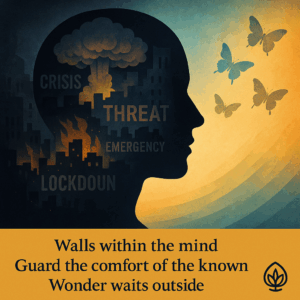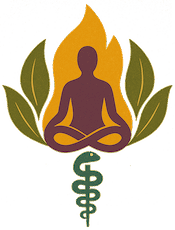 We think of oppression as something done tous; by governments, systems, or algorithms.
We think of oppression as something done tous; by governments, systems, or algorithms.
But what if control begins inside, in the subtle ways we defend our beliefs, avoid discomfort, and surrender curiosity?
Closed minds don’t need fences. They build their own.
⸻
After exploring the outer layers of control in Freedom Under Watch, it becomes impossible not to look inward.
If states and corporations track our movements and harvest our data, it is only because we’ve been conditioned; slowly, silently, to trade awareness for convenience.
The architecture of control begins in the architecture of the mind.
⸻
How Minds Close
A closed mind rarely knows it’s closed.
It begins as self-protection: the wish to feel safe, right, certain.
When life delivers shock, betrayal, or social rejection, the psyche tightens around what it already knows.
It stops seeking, stops questioning, stops feeling.
Soon we curate our own reality: only following people who agree with us, only reading what confirms us, only engaging when we can win.
The more polarized we become, the more predictable, and therefore controllable, we are.
In this way, mass surveillance becomes almost unnecessary: we police ourselves from the inside out.
⸻
The Emotional Economy of Belief
Every closed system, political, religious, or scientific, runs on emotional currency.
Fear and moral outrage bond groups more quickly than compassion or nuance.
Algorithms amplify that energy, feeding us content that keeps us reactive.
But outrage has a short half-life; soon we need a stronger hit of indignation to feel alive.
This is how brainwashing happens in the modern age: not just through overt propaganda, but through constant stimulation that bypasses reflection.
A society addicted to certainty forgets how to think, or feel, for itself.
⸻
Reopening the Mind
Reclaiming mental freedom doesn’t require new ideology; it requires presence.
Openness isn’t weakness. It’s the willingness to stay curious in the face of fear.
When the body softens, awareness returns.
Breathwork, silence, honest conversation; these are acts of quiet revolution.
True openness isn’t a posture of ease; it’s often an act of endurance.
The body flinches when confronted with ideas that threaten identity.
To remain present; to breathe and listen, rather than react, is an advanced form of mindfulness.
It is quite literally painful, but I often force myself to read views I find unbearable, not to agree, but to remember that awareness itself must stay porous.
The moment I close completely, the system has won.
⸻
Bridging the Inner and Outer
Just as external control thrives on fear, internal rigidity thrives on unhealed pain.
The more we integrate within, the less we can be manipulated from without.
Inner freedom becomes the antidote to surveillance, because a self-aware person can’t be easily programmed.
Together, Freedom Under Watch and The Architecture of Closed Minds tell one story:
That liberation is both political and personal.
The walls fall from the outside and the inside, one awareness at a time.
⸻
Haiku
Walls within the mind
Guard the comfort of the known
Wonder waits outside.
